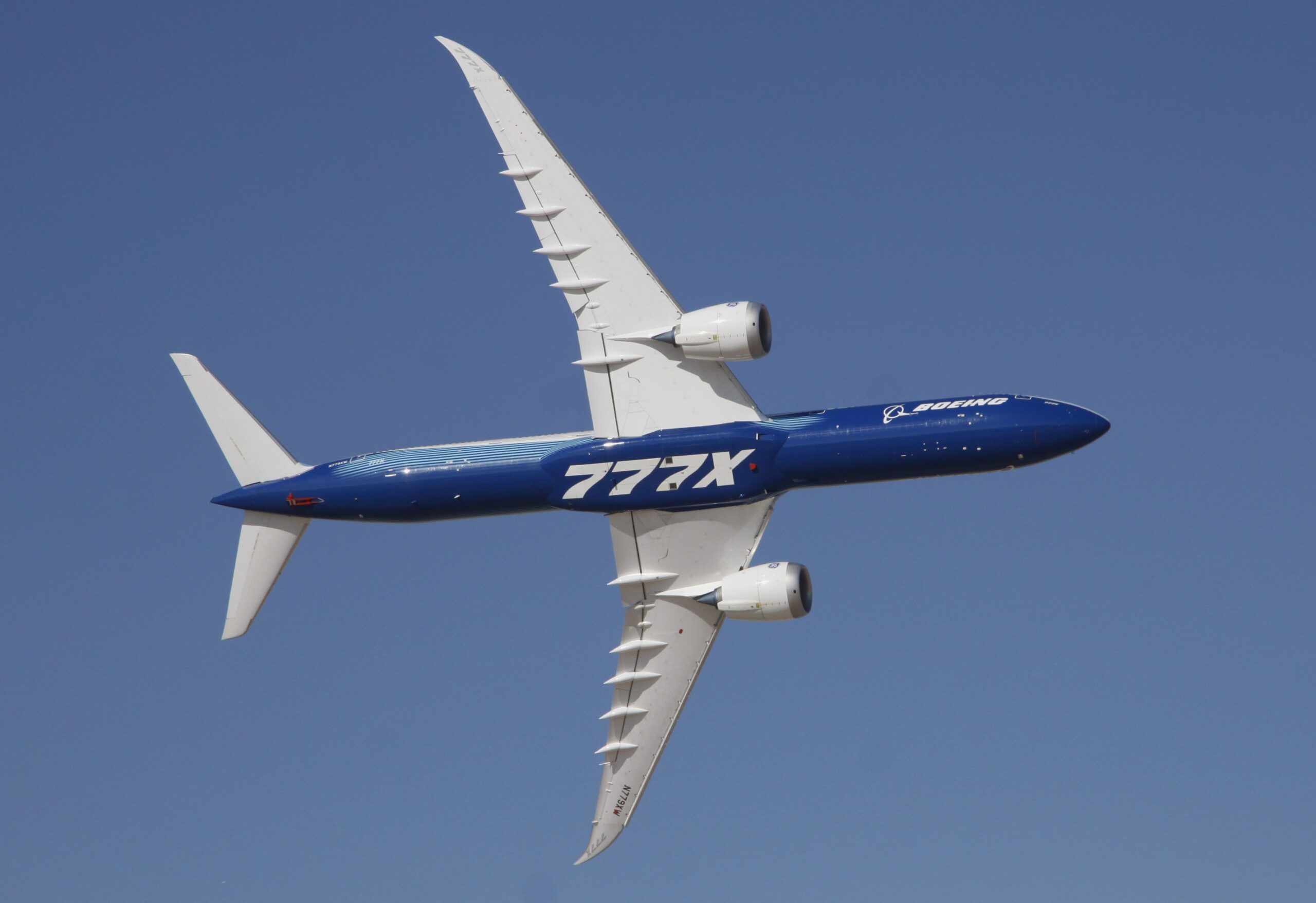
MG 6649 scaled
Let’s reflect on 2021 with a selection of pictures to highlight events of another difficult year for aviation. The year was largely dominated (again) by the pandemic, resulting in numerous travel restrictions and border closures. Domestic air travel in Russia soared, however, as was the US and to a lesser extent China, but International traffic suffered for most of the year, notably in Asia, Australia, and between Europe and the US.
1 – Airbus tried to sandbag everyone by telling them it was undecided about launching the A350 Freighter. Until July 29, when the airframer officially announced that the Board had approved the type. It took until November 15 and Dubai Airshow for Airbus to sign its launch customer with Air Lease Corporation. Thousands of kilometers apart, Airbus CEO Guillaume Faury and CCO Christian Scherer in Dubai and ALC Chairman Steve Udvar-Hazy and CEO John Plueger in Texas, signed the contract for seven freighters. Since then, the A350F has racked up more orders from CMA CGM, Singapore Airlines, and Air France. It was positive news for the A350 at a time when the type hit the headlines for other reasons in the spat between Qatar Airways and Airbus over the paint quality issue, which will end up in the London High Court in 2022. (Richard Schuurman)
2 – The Irkut MC-21 made its international debut at the Dubai Airshow in November. United Aircraft Corporation sent the -310 version with Russian PD-14 engines. Here, she is about the start her flying display, confirming how quiet the Russian-made engines are. (Richard Schuurman)
3 – While some analysts still remain skeptical about the entire concept, the Urban Air Mobility market surged in 2021. At least from the perspective of commercial announcements. Although many orders are conditional on the new eVTOLs meeting certain specifications, big names like United, American, Virgin, and Avolon joined the UAM scene. Vertical Aerospace, Joby, Archer, Lilium, and Eve all reported new milestones on their development roadmap, which will see most of them entering the market in 2024-2026. Eve is seen by many as the most credible one, having the backing from Embraer even after the airframer decided to spin out the start-up and sell it to Zanite. (Vertical Aerospace)
4 – Boeing‘s 2021 was the third year in a row that the US airframer was in deep trouble. Whereas 2019 and 2020 were determined by the MAX issues after the two fatal accidents in 2018 and 2019, in the past year the type returned to service again and performed safely. A major milestone for Boeing was the approval by the Chinese regulators to allow the MAX back to service, opening up potential new sales. At the same time, the MAX lost out to the Airbus A321neo when Jet 2, Qantas, KLM, and Transavia all preferred the Airbus over the Boeing. That must have hurt in Seattle. (Airbus)
5 – Boeing’s big headache in 2021 was the 787, of which it was able to deliver just fourteen until deliveries were paused in May. The Dreamliner continues to suffer from quality issues, even almost a decade into full production now. Boeing believes it is on top of them but the FAA is reluctant to clear the type for deliveries until it is fully satisfied that the issues of skimming, skin flatness and composite contamination are understood and in the past. It could take well into Q2 of 2022 until a backlog of some 105 787s in inventory starts rolling out of the factory again. (Leonardo)
6 – Meanwhile, the 777X is also still awaiting approval to start the certification phase as the FAA and other regulators want to make sure that they fully understand the required changes to the flight control computers and other hardware and software. 777-9 test aircraft WH001 made her show debut in Dubai and impressed with some pretty aggressive flying, including an almost roll over the port wing (main picture). Expect the launch of the 777-8F somewhere in 2022. Boeing wasn’t ready to launch this year but will make sure that the Airbus A350F won’t get too far ahead in the freighter race. (Richard Schuurman)
7 – Embraer revealed four concepts for low or even net-zero emission aircraft in November under the Energia umbrella. They are just concepts, the Brazilian airframer keeps repeating, but Embraer hopes to launch all four in the next five to ten years. The small regional aircraft rely on electric, hybrid-electric, and even hydrogen as energy sources. And although Embraer thinks that it will take at least until 2050 before hydrogen will be widely available as an alternative fuel and as such is more conservative than Airbus with its ZEROe, the Brazilians are jumping on the same wagon. Embraer also updated its plans for the new turboprop, which has some design similarities with the gas-turbine Energia concept, but we have to wait until probably Farnborough to witness its official launch. Just like that of the E-jet full freighter. (Embraer)
8 – Speaking about hydrogen, US start-up ZeroAvia announced quite a few developments and new partnerships for its hydrogen fuel-cell concept. The company will start flight testing with a new prototype soon (the Dornier Do-228), but ZeroAvia is already thinking about the next step. It announced agreements with Alaska Airlines and De Havilland Canada to convert the Dash 8-400 to an electric turboprop powered by electromotors running in juice from fuel cells. This gives DHC interesting opportunities to develop the Dash 8 into a nextgen platform. The same could be possible with the ex-Bombardier Mitsubishi CRJ, on which ZeroAvia and United Airlines teamed up to have a hydrogen-based version available in 2028. Other initiatives like Universal Hydrogen have also announced various partnerships to introduce the interchangeable fuel tank concept on the ATR and Dash 8. (ZeroAvia)
9 – On December 16, dawn set on the Airbus A380 production when Airbus delivered the final and 251st of the line to Emirates. In just over fourteen years, the A380 has seen its first and last delivery. Expect the type to continue flying for at least another fifteen years, with Emirates still full in love with it. While the type was almost written off during the pandemic, more and more carriers are taking them out of storage and bringing them back to service. Emirates, China Southern, British Airways, Singapore Airlines, and Qantas all have them solidly in their schedules for 2022. (Airbus)
10 – 2021 was also a strong year for business aviation. Not only from a demand point of view, but the manufacturers were busy updating or introducing new models. For instance, Dassault unveiled its new Falcon 10X, Gulfstream the G800 (picture) and G400, Bombardier the Challenger 3500. Airbus was busy marketing the ACJ TwoTwenty as the alternative business jet and even Sukhoi entered the market with the Aurus, competitive on price but without a reputation. (Gulfstream)
Views: 0













